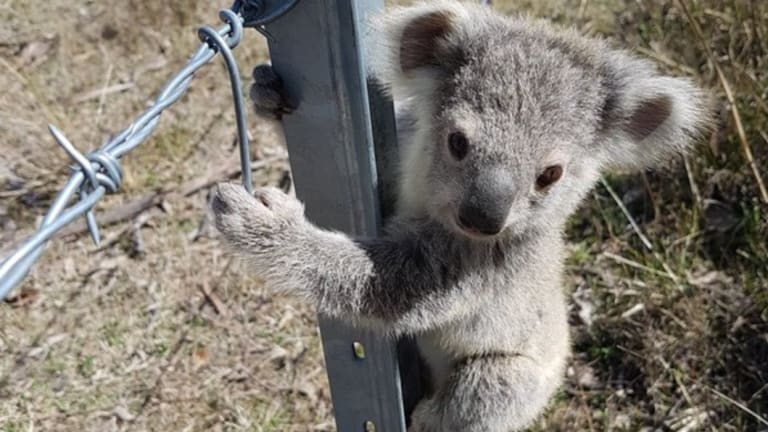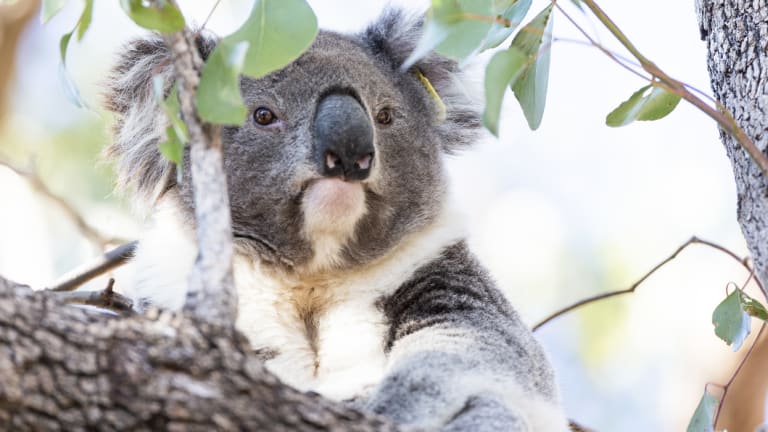Alarming':
State ignoring koala data as icon heads towards extinction

SMH,
28
September, 2018
The
Berejiklian government is ignoring its own advice on the best regions
to project koalas as numbers of the much-loved marsupial plummet
towards extinction in the state by mid-century, reports show.
Documents
obtained under freedom of information laws by the North Coast
Environment Council and the National Parks Association – and
released on Save the Koala Day on Friday – found state reserves
cover just 0.2 per cent of so-called "koala hubs" that are
home to key colonies of the animal.
"To
save the koala as a species, governments will need to protect the
actual real living koala populations," the council's Susie
Russell said. "Calling random areas of forest 'koala reserves'
does nothing if there are no koalas living there."
For
instance, of 77,517 hectares of koala hubs in north-east NSW, only
one-seventh were located in national parks, with a fifth in state
forests and the remaining two-thirds on private land, the data show.
Dr
Oisin Sweeney, senior ecologist with the NPA, said it must be "deeply
frustrating" for Office of Environment and Heritage staff to
have work so hard to identify the best koala habitat only to see the
government largely ignore this when setting land aside for
protection.
Changes
to forestry permits that will allow an intensification of logging
particularly in the state's north-east of the state, increased
land-clearing for farming, and rezoning for housing will further hit
key koala habitats, he said.
"By
completely ignoring urban development, the government is abandoning a
big chunk of known koala colonies," Dr Sweeney said.

He
estimates the state has about 15,000 to 20,000 koalas, "with
almost every biodiversity area in NSW showing alarming declines".
A
separate report released on Friday by WWF says koalas will be extinct
in NSW by 2050 on current trends "without a significant
reduction in tree clearing, mitigation of climate change and [a]
major expansion of protected areas". It estimated the koala
population sank by one-third to 21,000 by 2010.
Environment
Minister Gabrielle Upton defended the government's record, saying its
$45 million Koala Strategy to add reserve more habitat, tackle
diseases and fix roadkill hotspots was "the biggest commitment
by any state government to secure koalas in the wild".
Ms
Upton also introduced a bill on Thursday to transfer more than 4500
hectares of state forest to the national park estate, about half of
which was habitat. About 20,000 hectares of state forest on the
Central Coast, Hunter, Hawkesbury, North Coast and Southern Highlands
has now been set aside as new koala reserves, she said.
Labor's
environment spokeswoman Penny Sharpe said "the death knell for
koalas in NSW is sounding loud and clear".
"Increased
land clearing, deforestation, failure to create new National Parks,
failing to protect existing koala habitats are the ingredients that
will see koalas in NSW lost forever," she said.
Dawn
Walker, the Greens spokeswoman for koalas and forests, said the Koala
Plan was "a sham" because it failed to halt logging of
native forests or wind back looser land-clearing laws. The government
should establish a Great Koala National Park in the Coffs Harbour
hinterland where a fifth of the state's wild koalas were at risk from
logging, she said.
According
to the released documents, the Great Koala National Park proposal "is
the most important area of public land for koalas in NSW and a
conservation priority given the concentration of hubs within its
boundaries". About 56 per cent of hubs in the state's north east
would be contained within that plan.
An
OEH spokeswoman said the koala plan was "based on the NSW Chief
Scientist and Engineer's recommendations and informed by input from
an expert advisory committee".
A
centrepiece of the NSW Koala Strategy was the setting aside of large
areas "where koalas can thrive and new habitats can be created",
and more than 24,000 hectares of state forest would be secured in
initial part of the plan, she said.



No comments:
Post a Comment
Note: only a member of this blog may post a comment.